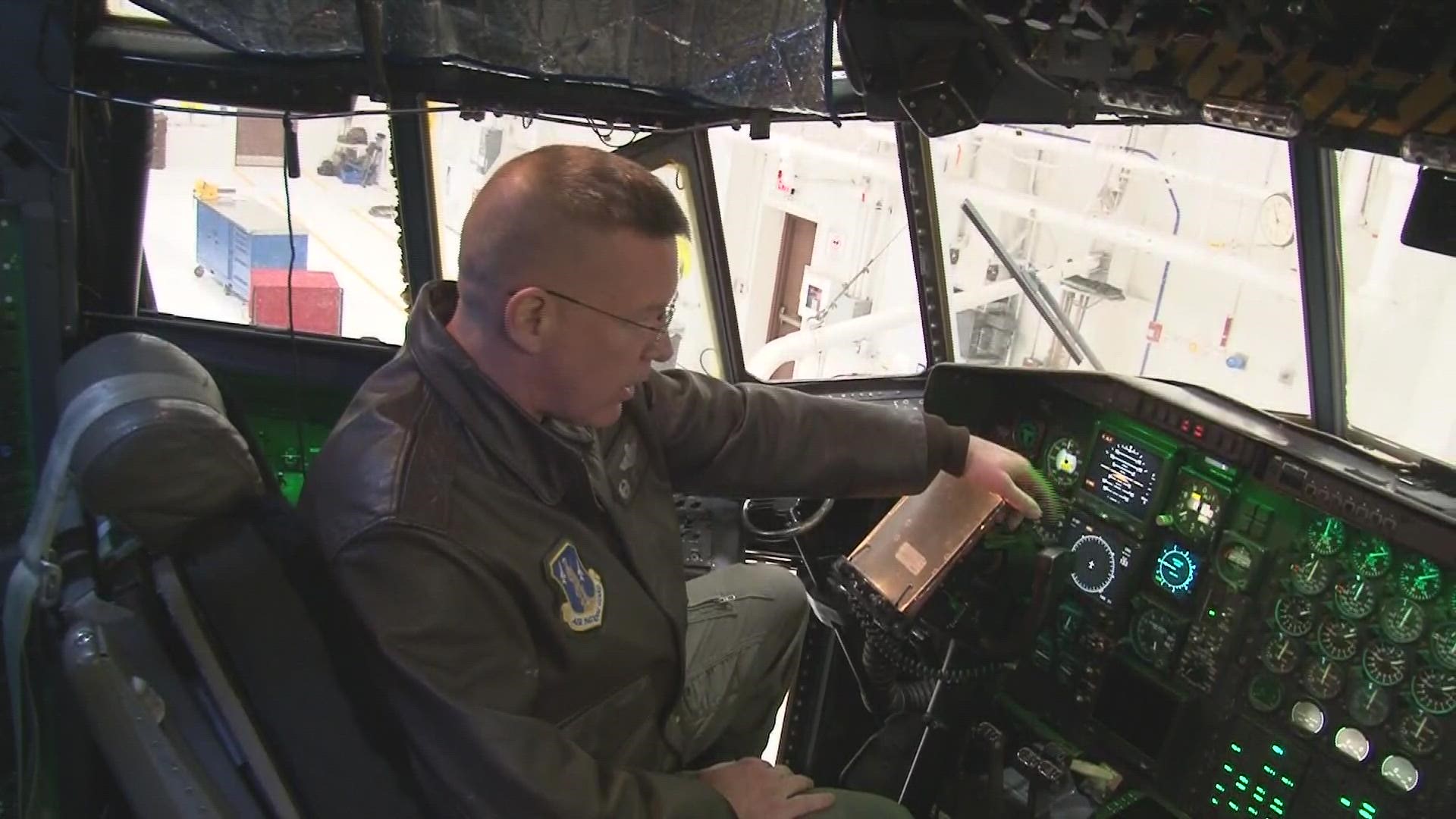MINNEAPOLIS — Minnesota's 133rd Airlift Wing has been flying missions for a century now and logged 50 years in the massive Lockheed C-130 transport planes, as part of the Air National Guard. But things could be changing.
The Air Force is looking to cut 45 of its fleet of 300 C-130s, and one idea under serious consideration at the Pentagon is to covert the 133rd to a cyberspace warfare unit. That's a mission that wouldn't require those planes, let alone the jobs that keep them running and flying.
"To say we have a history and a culture of being an airlift wing would be an understatement," Col. James Cleet, the commander of the 133rd, told KARE.
"We’ve been in C-130s for 50 years, and we are really, really good at maintaining these airplanes, flying these airplanes and taking care of the mission."
The 133rd has eight C-130s. They've been used in support of both war and peacetime, with missions ranging from humanitarian to disaster relief to medical evacuations to simply moving personnel and equipment from place to place.
"Just last year we used these planes to transport a thousand soldiers from the 34th infantry division to go to the United States Capitol to secure the Inauguration," Cleet explained.
"We spent a big part of last year and the previous year in the Middle East supporting operations in Afghanistan and Iraq."
The C-130 can land on short landing strips. It also has the capacity to drop cargo or personnel with parachutes into a drop zone if there's no place to land.
"There is nothing out there that can do what this airplane does. We do a really a really good job at the mission, and we’ll keep doing it as long as the Air Force lets us have these airplanes."
Currently, the unit has 350 full-time employees and more than 850 part-time Guard members working in support of the missions. The job impact is one of the reasons Minnesota's entire congressional delegation and Gov. Tim Walz have urged the Air Force's top command to keep the current mission here.
Their next-door neighbor, the 934th Airlift Wing of the Air Force Reserve, also has eight of the aircraft, bringing Minnesota's total to 16. The 934th is involved in federal missions, while the 133rd can do both federal and state missions as an Air Guard unit.
Col. Cleet echoed what lawmakers have stressed in communications with Air Force leadership, that the 133rd is strategically located in the middle of the continent.
"We’re in the middle of the country so we can get just about everywhere. We don’t get hit by hurricanes so we’re available even through the hurricane season," the commander explained.
"And, frankly, being at the Minneapolis Saint Paul Airport hub helps us keep our pilot corps at 100 percent. Many of my pilots are flying for Delta day to day, then they come fly for us when we need them."
Cleet has embraced the huge turboprop planes, even though they're a different animal compared to the F-16 fighter jets he used to fly.
"It's different and it’s fun. Trying to take a 150,000-pound airplane and putting it on a short strip and land it in the middle of nowhere potentially at night -- potentially all lights out on night vision goggles -- is a unique challenge."

